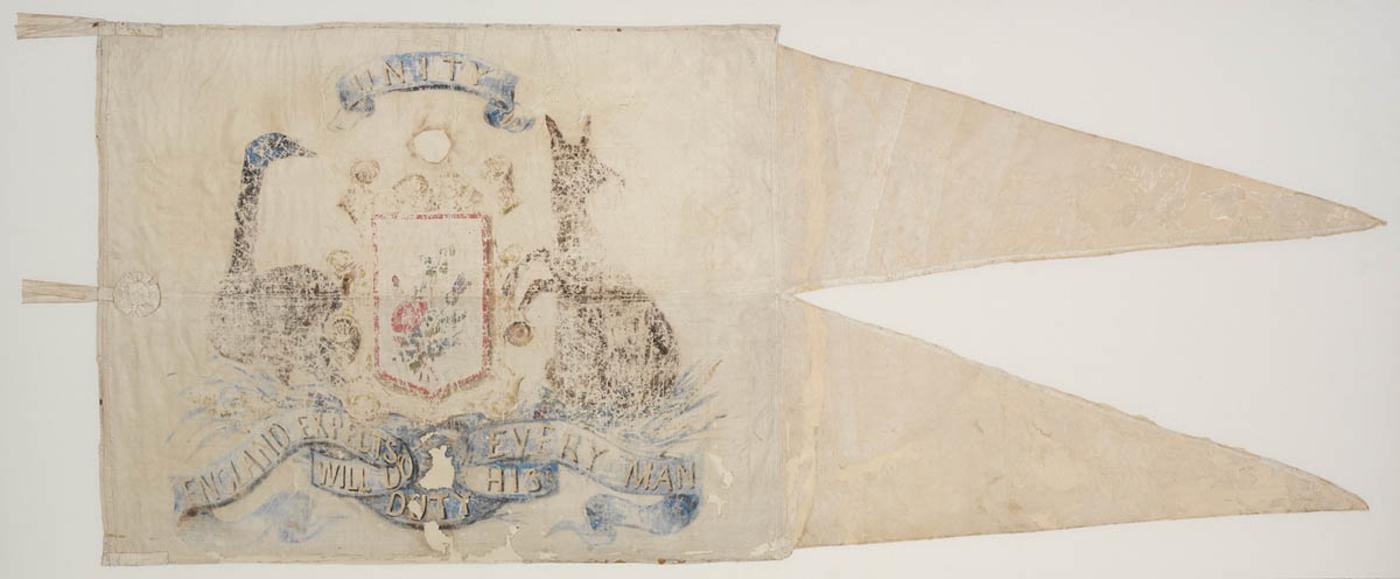The Bowman flag - the first Australian coat of arms
The first recorded use of the kangaroo and emu supporting a shield is found on the Bowman Flag of 1806. This flag may be the inspiration for the use of the kangaroo and emu on the current Australian coat of arms.
The Bowman Flag was flown by John Bowman and his family on their farm, Archerfield, at Richmond, near Sydney in April 1806. The Bowmans were celebrating the victory at the Battle of Trafalgar. An account of the battle and victory (which occurred on 21 October 1805) was published in The Sydney Gazette on 13 April 1806. To commemorate the victory, a day of thanksgiving was ordered by Governor King for the following Sunday at which 'all persons not prevented by sickness or the necessary care of their dwellings are expected to attend.'
According to descendants of the Bowman family, the flag was made using silk from Honor Bowman’s wedding dress. It is not clear whether the flag was sewn by John’s daughter, Mary Bowman (then aged nine), or her mother Honor. The painting of the flag appears to be the work of a professional sign painter, so is unlikely to have been done by Honor or Mary, although the Bowmans may have assisted in the design. The design incorporates the rose, shamrock and thistle – the traditional floral symbols of England, Ireland and Scotland, as well as the word 'Unity' and the motto ‘England expects every man will do his duty’. This message was signalled by Horatio Nelson from the HMS Victory at the beginning of the Battle of Trafalgar to rally the fleet.

